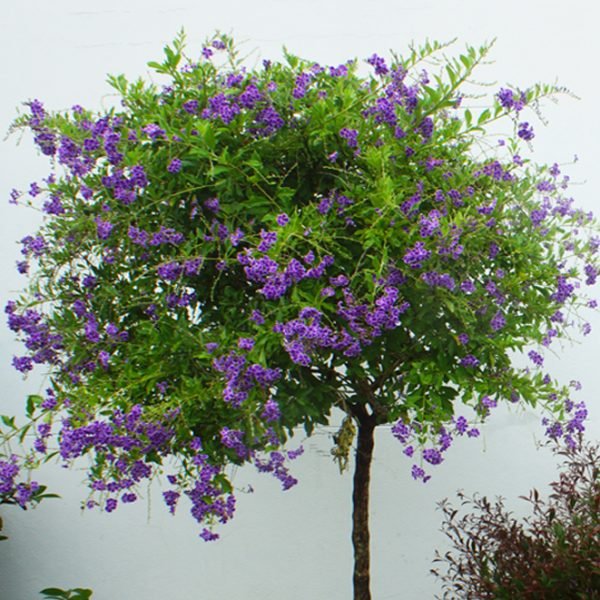These tender flowering shrubs feature glossy green leaves arranged in pairs or whorls along stems. Attractive blue or white flowers in clusters attract butterflies in summer, are followed by bunches of berrylike yellow fruit. Plants marketed as Duranta stenostachya are often actually Duranta erecta; distinguishing characteristics are described below. Use as quick, tall screen. Thrive in heat. Need continual thinning and pruning to stay under control. Good container plants.
The Duranta bush grows as an evergreen, rounded shrub or small tree in U.S. Department of Agriculture plant hardiness zones 9b through 11a. In colder climates, gardeners plant it as an annual in the garden or in containers. The Duranta bush grows quickly up to 15 feet high and wide as a shrub, but it tops out at about 5 feet tall when planted as an annual.
Flowers and Foliage
The Duranta bush’s fragrant lavender, purple or white flowers attract butterflies and hummingbirds to your landscape. The small flowers dangle from thorny, weeping branches with light gray bark among glossy, green, oval-shaped leaves. The blossoms turn into small, yellow, berry-like fruit called drupes. For eye-catching variegated leaves, select the cultivars “Golden Edge” or “Variegata.”
The ideal spot for a Duranta bush is a moist place with full sun. This shrub attains its optimum size in any kind of well-drained soil with an acidic, neutral or slightly alkaline pH, as long as it’s rich in organic matter. It has an adaptable nature and will also grow in partial sun, as well as dry, rocky or sandy areas, but it won’t reach its full size. The Duranta bush tolerates light to moderate sea spray in coastal zones with dry weather

